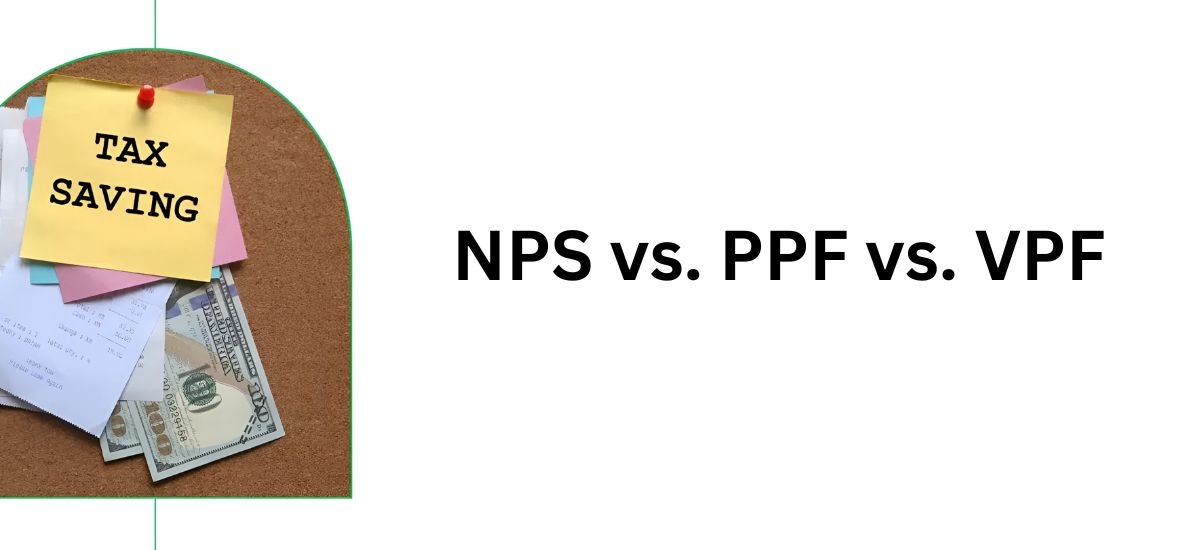Strategic long-term investing is a wise financial move that sets the stage for a stable and thriving financial future. Within the diverse landscape of long-term investment vehicles, the National Pension Scheme (NPS), Public Provident Fund (PPF), and Voluntary Provident Fund (VPF) stand out as popular choices for individuals seeking both growth and security.
Leveraging the expertise of financial analyst Someshwar Srivastav, we will dissect the nuances of each investment avenue and provide insights to empower you to make a well-informed financial decision.
What is Long-Term Investment?
Long-term investment involves strategically placing capital in assets or securities with the anticipation of significant growth over an extended timeframe, often spanning years or even generations.
> The goal is to harness the power of long-term asset appreciation and growth to achieve significant financial milestones, such as securing a comfortable retirement, owning a home, or financing educational pursuits.
> This strategy advocates for a long-term perspective, encouraging investors to weather market volatility and harness the potential of compounding growth over time.
With a long-term perspective, investors aim to capitalize on the compounding effect of time and market expansion to amplify their wealth and ensure a solid financial foundation for years to come.
Types Of Long-Term Investment-
> National Pension Scheme (NPS),
> Public Provident Fund (PPF),
> Voluntary Provident Fund (VPF).
1. National Pension Scheme (NPS)
The National Pension Scheme (NPS) is a government-backed retirement savings plan designed to foster consistent savings habits and ensure a financially secure retirement. Contributions are strategically allocated across diverse investment vehicles like equities, government bonds, corporate debt, and alternative assets, offering a balanced approach to growth and security, as highlighted by Someshwar Srivastava.
Additionally, NPS incentivizes retirement savings by offering attractive tax benefits under Section 80C and a unique deduction of up to ₹50,000 through Section 80CCD(1B). Its structured approach with a lock-in period ensures disciplined saving, while permitting partial withdrawals for specific needs after a defined period. This makes it an ideal instrument for long-term retirement planning.
Moreover, the scheme’s diversified investment options, spread across equities, government securities, and corporate bonds, offer the potential for enhanced returns over time, particularly appealing to investors with a long investment horizon.
2. Public Provident Fund (PPF)
The Public Provident Fund (PPF) is a government-sponsored savings instrument renowned for its secure nature and tax advantages. With a fixed tenure of 15 years, which can be extended in 5-year increments, PPF investments provide stable returns, making them a reliable choice for risk-averse individuals seeking long-term financial security.
For those prioritizing stability and long-term financial security, a Public Provident Fund (PPF) investment can be a compelling option. It not only offers tax-free returns but also provides tax deductions on contributions, making it a financially savvy choice. Furthermore, the option for partial withdrawals after a certain holding period adds an extra layer of flexibility to meet unforeseen financial needs.
3. Voluntary Provident Fund (VPF)
The Voluntary Provident Fund (VPF) is an optional enhancement to the Employees’ Provident Fund (EPF) that empowers employees to contribute a greater percentage of their earnings, exceeding the mandatory 12%, towards their retirement savings.
> For salaried professionals seeking a tax-advantaged avenue for long-term savings, VPF emerges as an appealing option.
> Not only do VPF contributions yield interest that is exempt from taxation, but the entire accumulated amount, including earned interest, enjoys tax-free status upon reaching maturity.
The inherent stability, secure nature, and competitive returns of VPF make it an appealing option for those seeking a structured and reliable approach to long-term financial planning.
Comparing the Options
Selecting the optimal long-term investment from NPS, PPF, and VPF necessitates a thoughtful evaluation of your individual financial aspirations, comfort level with risk, and intended investment duration.
Let’s evaluate these investment options against a set of key criteria to determine the most suitable choice for your needs:
1. Returns and Growth Potential:
– NPS, with its equity exposure and diversified investments, has the potential for higher gains, but returns fluctuate with market conditions.
PPF, while offering a lower fixed return, provides the assurance of stability and security, shielding your investment from market volatility.
VPF, mirroring EPF, provides a steady income with a fixed interest rate set by the government, ensuring a dependable return on your investment.
2. Tax Benefits:
> NPS boasts a comprehensive tax-saving structure, offering deductions on contributions and tax-free withdrawals, enhancing overall investment efficiency throughout its duration.
> PPF stands out with its unparalleled EEE (Exempt, Exempt, Exempt) tax treatment, ensuring that contributions, accumulated interest, and final maturity amount are entirely exempt from taxes.
> VPF mirrors the tax advantages of EPF, granting tax deductions on contributions and the accumulated interest, making it a lucrative option for long-term savings and tax optimization.
3. Liquidity and Withdrawals:
> NPS offers limited liquidity through partial withdrawals for specific purposes after fulfilling a lock-in period.
> PPF’s 15-year lock-in period can be partially bypassed with withdrawals allowed from the 7th year onwards.
> VPF, linked to EPF, inherits the same withdrawal rules, ensuring access to funds when needed.
Conclusion
Financial experts like Someshwar Srivastav offer invaluable guidance in aligning your investments with your financial aspirations. To make an informed decision, it’s imperative to carefully evaluate each investment opportunity, considering potential returns, tax advantages, and liquidity options.









